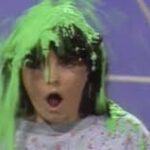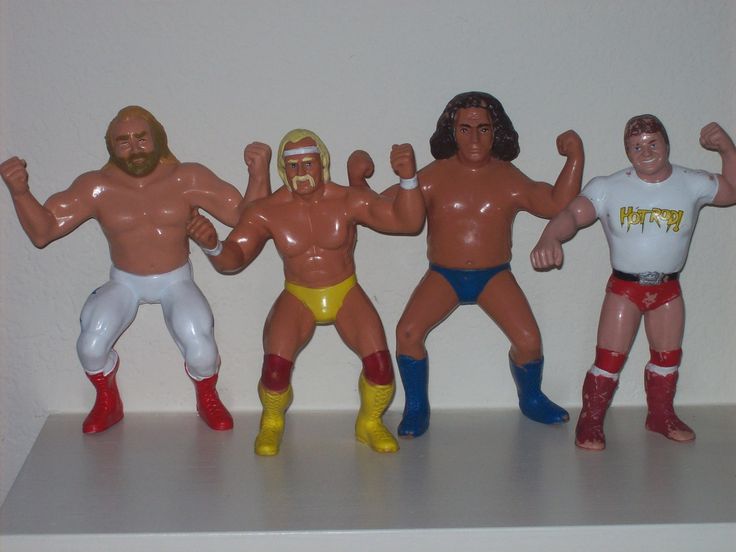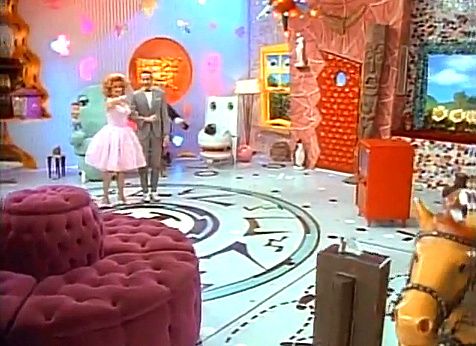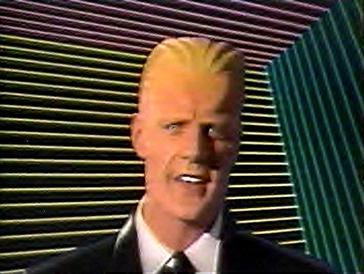 For children of the 1980s, few TV moments were as iconic, mysterious, and weirdly thrilling as getting slimed on You Can’t Do That on Television. Airing on Nickelodeon, the show became a cultural juggernaut and launched a phenomenon that defined an entire generation’s sense of humor, chaos, and fun. While You Can’t Do That on Television was known for its irreverent sketch comedy, deadpan delivery, and offbeat Canadian charm, it was the green slime — that cold, gooey, unpredictable avalanche of gunk — that elevated it to legendary status. Getting slimed wasn’t just a gag; it was a badge of honor, a rite of passage, and a visual cue that you were officially part of the show’s wild, wonderful, absurd universe.
For children of the 1980s, few TV moments were as iconic, mysterious, and weirdly thrilling as getting slimed on You Can’t Do That on Television. Airing on Nickelodeon, the show became a cultural juggernaut and launched a phenomenon that defined an entire generation’s sense of humor, chaos, and fun. While You Can’t Do That on Television was known for its irreverent sketch comedy, deadpan delivery, and offbeat Canadian charm, it was the green slime — that cold, gooey, unpredictable avalanche of gunk — that elevated it to legendary status. Getting slimed wasn’t just a gag; it was a badge of honor, a rite of passage, and a visual cue that you were officially part of the show’s wild, wonderful, absurd universe.
The premise was simple, yet brilliant in its randomness. Whenever a cast member uttered the phrase “I don’t know,” a bucket of green slime would fall from above, drenching them in thick, messy glory. There was no warning, no fanfare — just an immediate downpour of slime from the unseen heavens. It could happen anywhere: in a classroom sketch, during a locker room confession, in the middle of a scene with no clear context. That unpredictability made it exhilarating. Viewers watched with eager anticipation, waiting for the dreaded words to slip out, knowing full well what was coming next.
The green slime itself became a character in its own right — mysterious, mischievous, and omnipresent. Its consistency was a closely guarded secret, but stories from the cast described it as cold, lumpy, and vaguely disgusting, made from ingredients that included cream of wheat, green food coloring, and occasionally baby shampoo to soften the blow. But the sensory assault was part of the appeal. Cast members were doused in the stuff repeatedly, often more than once per episode, and they rarely looked like they enjoyed it. But that’s what made it even funnier. Their stoic reactions, shocked expressions, or groans of disgust added to the show’s subversive humor.
Unlike typical children’s programming at the time, which tended to be sanitized and upbeat, You Can’t Do That on Television embraced messiness, sarcasm, and self-deprecation. It was anarchic and proudly low-budget, with deliberately wobbly sets, inconsistent props, and child actors who seemed just barely able to keep a straight face. The slime was the ultimate physical representation of the show’s attitude — an unpredictable, gleeful middle finger to seriousness and polish. The green slime didn’t ask for permission. It just was, and it came down whether you liked it or not.
To be slimed on You Can’t Do That on Television was to become part of an elite club. Fans of the show fantasized about it, and children across North America imagined themselves saying “I don’t know” just to see what it felt like to be completely engulfed in green goo. It transcended being a simple joke and became a kind of initiation ritual — a way to prove you were tough enough, cool enough, and brave enough to take the slime hit with a smile. When cast members were slimed on air, they became immediate heroes to the kids watching at home. The slime was proof of authenticity. You couldn’t fake getting slimed. You had to stand there, take it, and let the absurdity wash over you.
The show’s producers knew the slime was gold — metaphorically and literally. It was sticky, it was gross, and it made the audience scream with laughter. Its appeal was so strong that it eventually became the cornerstone of Nickelodeon’s brand identity. Entire game shows like Double Dare and Figure It Out were built around the concept of slime, and getting slimed became the highest possible honor on the network. Celebrities, athletes, and pop stars would eventually line up to get slimed at Nickelodeon’s Kids’ Choice Awards. But none of that would have happened if You Can’t Do That on Television hadn’t done it first.
In the early seasons of the show, the green slime gag wasn’t even a fully formed concept. Originally, the punishment for saying “I don’t know” was a bucket of water. But as the writers experimented, the slime was introduced, and the reaction was immediate. Kids were obsessed. Green slime became a kind of calling card for the show, and soon, it was expected. Without it, the episodes would have felt incomplete. Cast members would sometimes try to tiptoe around the phrase, using clever language to avoid triggering the slime — which only made the moments when they failed even more satisfying. And of course, sometimes they were tricked into it, their expressions of betrayal and horror delighting the audience even more.
Beyond just being funny, the slime represented a deeper ethos that set the show apart. You Can’t Do That on Television didn’t coddle its young cast or its young audience. It treated kids as savvy, sarcastic, and capable of understanding absurdity. It didn’t preach or talk down to them. Instead, it invited them into a world where authority figures were clueless, teachers were mean, parents were absurd, and the universe could drop a bucket of green slime on your head at any moment. It was chaos wrapped in comedy, and the slime was the glue — or rather, the goo — that held it all together.
Kids watching at home weren’t just spectators. They became part of the show’s messy spirit. They repeated the catchphrases, drew slime in their notebooks, and dreamed of one day being on set, standing under the infamous slime bucket. In an age before TikTok challenges or viral YouTube pranks, getting slimed on You Can’t Do That on Television was the ultimate kid fantasy. It was disgusting, hilarious, and totally unforgettable.
Even today, decades later, the image of someone standing under a deluge of bright green goo is instantly recognizable. It brings back memories of after-school TV, orange couches, and the thrill of not knowing what was going to happen next. And while many shows have since borrowed or reimagined the slime gag, none have done it with the same mix of deadpan brilliance and rebellious energy as You Can’t Do That on Television. Getting slimed wasn’t just a gimmick — it was an institution. And for a generation of kids growing up in the 1980s, it was one of the most awesome, disgusting, hilarious things they had ever seen on TV.


